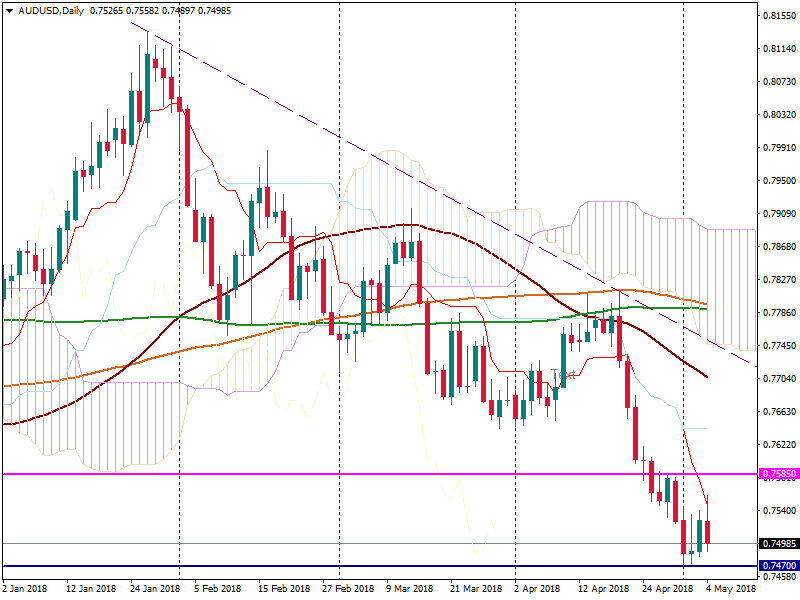AUD: will the downtrend end soon?
The Australian dollar started its downward movement at the end of January 2018. Although the currency tried to change its direction, it still has not been able to recover. The aussie appeared to be the second-worst performing G-10 currency this year. At the beginning of May, the AUD reached the lows of the May 2017.
Let’s look what factors cause a high volatility of the aussie.
Positive economic data and hawkish comments of the Reserve Bank of Australia support the Australian dollar’s rise.
For example, on May 3, the AUD managed to recover as the Australian economic data showed a great surplus. While the market expected the trade balance to decline to 0.68B, it rose to 1.53B. Trade balance is a leading indicator of the economic health. When exports exceed imports, a currency is supposed to appreciate. As a result, positive data was a supportive factor for the Australian dollar. However, the trade balance is not a sufficient factor for the currency’s rise.
Next day the RBA released its monetary policy statement. The central bank presented its upgraded forecast for the core inflation, the forecast increased from 1.75% to 2%. Moreover, RBA’s members declared that if the economy improves as expected, higher rates are appropriate. As a result, the aussie significantly rose. However, it could not gain a foothold and turned around. Unfavorable interest rate differentials that are weighing on the Australian dollar are still an actual problem. Despite the fact that the RBA’s comments seemed to be encouraging, the rate hike is still far while the Fed aims to raise the interest rate additionally at least two times this year.
Moreover, trade wars tensions highly affect the aussie’s rate. On May 4, US-China trade negotiations ended without a significant progress. Parties agreed on further talks, however, major disagreements on some matters still exist. It means that trade wars will continue to influence markets and the Australian dollar particularly.
Based on the above, we can conclude that the Australian dollar is under pressure as positive factors continue to balance with negative ones.
Let’s look whether the aussie will be able to find a support.
Goldman Sachs’ analysts predict a further fall of the Australian dollar during the year. There are several reasons for that. First of all, the Reserve Bank of Australia keeps the interest rate unchanged. Secondly, in March employment rose less than was anticipated. Moreover, the 10-year Treasury yield recently climbed above 3%, that negatively affected the Australian dollar. So according to the forecast, the AUD will decline to 0.72 level by the end of the year.
To conclude, we can say that the forecast for the Australian dollar is not encouraging as the negative factors are still in force. Until the trade wars disputes are solved and the RBA increases the interest rate, the aussie will remain under pressure.
